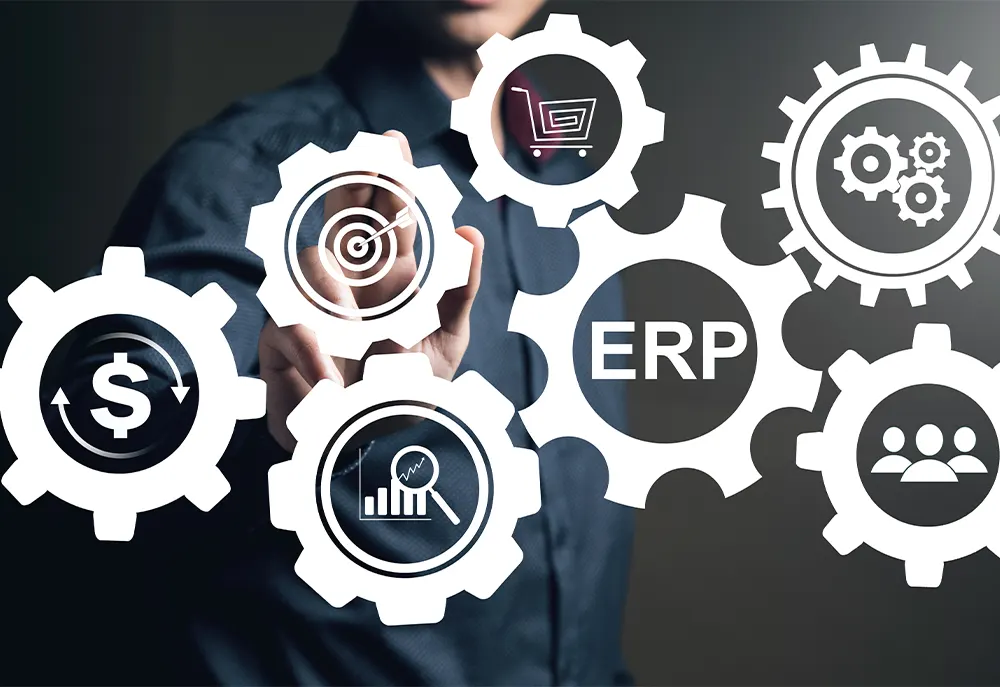Today, companies, whether small or large, must manage massive volumes of data and operational processes that require flawless coordination. One of the most powerful tools for centralizing this information and automating processes is the ERP (Enterprise Resource Planning). It allows the entire company’s operations to be grouped on a single platform: inventory management, invoicing, accounting, human resources, order tracking, etc. Therefore, connect your ERP to your website seems like a tactical advantage for business management.
The installation of an ERP and its integration with other systems, particularly a website, are delicate steps that can make the difference between smooth operations or an accumulation of errors and inefficiencies. A poorly executed integration can lead to problems such as:
- data synchronization issues,
- errors in order management,
- poorly anticipated stock shortages.
Connect your ERP to your website must be well-managed at every step to ensure optimal workflow. Whether you’re managing an e-commerce site or a showcase site, the ERP becomes the core of your digital infrastructure. Indeed, it ensures that all critical data is centralized and consistent across your various platforms.
What is an ERP and Why is it Crucial for a Business Strategy?
An ERP (Enterprise Resource Planning) is an integrated management software that centralizes and automates all company processes within a single system. It consists of several modules covering key areas of the business, such as:
- Inventory management: control of stock levels, replenishment forecasts.
- Accounting and finance: management of financial flows, invoice and payment tracking.
- Human resources: employee management, payroll, absences.
- Customer Relationship Management (CRM): tracking customer interactions, managing business opportunities.
- Logistics: tracking shipments, managing suppliers and orders.
These different modules communicate with each other, ensuring a comprehensive view of the company’s operations. This allows for better coordination between different departments, but most importantly, it provides an overview of the data.
Why is an ERP Essential for a Company?
An ERP is not just for data management. It’s a strategic tool that, when properly used, can transform the way a company operates. Here’s why it’s crucial for a business strategy:
- Data centralization: All information related to internal processes (sales, purchases, human resources) is centralized in a single system, which avoids duplicates and errors. This simplifies management and makes data more accessible to all departments.
- Optimizing resource management: An ERP provides an overview of operations and resources (human, material, financial), allowing for better allocation of these resources.
- Improved productivity: Automating certain recurring tasks, such as order entry or invoicing, reduces time spent on these manual operations and frees up resources for higher-value tasks.
- Reducing errors: By automating processes, the ERP reduces the risk of human error and improves overall efficiency.
- Data-driven decision-making: An ERP provides detailed reports and real-time analyses, enabling managers to make informed decisions quickly.
- Scalability: Whether you’re a small business or a large enterprise, an ERP can scale with you as you grow. You can add modules as your needs increase.
- Facilitating interdepartmental collaboration: An ERP connects all departments within a company (sales, finance, purchasing, etc.), which promotes collaboration and improves internal communication.
Thus, an ERP doesn’t just manage the company’s operations. It plays a central role in growth strategy, cost management, and resource optimization.
How to Connect Your ERP to Your Website
Connecting an ERP to a website is crucial to ensuring that all internal data and management processes (orders, stocks, customers) are synchronized with the website’s front-end. Here are the key steps to successfully integrating them:
Choose the right systems to connect
The first step is to identify the ERP you are using (SAP, Odoo, Microsoft Dynamics, etc.) and the type of website to connect (e-commerce, showcase site). You also need to know if your website runs on a specific platform like WordPress, Shopify, or Magento, or a custom framework like Laravel or Django. The goal here is to ensure compatibility between the two systems. Most modern ERPs and CMSs offer APIs or plugins that facilitate connection.
Use APIs to exchange data
APIs (Application Programming Interfaces) allow both systems to “communicate” by exchanging data in real-time. The ERP’s API exposes its data (products, stocks, orders, etc.), while the website’s API retrieves and sends this information to the front-end for display. Here are some examples of data exchanges via API:
- Product updates: when you add a new product to the ERP, it is automatically added to the website.
- Order management: orders placed on the website are directly sent to the ERP for processing.
- Stock updates: when stocks decrease after an order, the website is updated in real-time.
Use ready-to-use connectors or modules
In some cases, ERPs and CMSs have native connectors that greatly simplify integration. For example, Odoo offers modules that allow direct synchronization with e-commerce platforms like WooCommerce or Magento. These solutions automate data synchronization without the need for custom development.
Develop middleware for specific integrations
If the ERP or website doesn’t have compatible connectors or APIs, middleware can be developed. This middleware acts as a bridge between the two systems, translating data from one to be understood by the other. For example, it can transform data formats or handle specific business rules before transmitting the information.
Automating tasks and regular synchronization
One of the main advantages of connecting an ERP to a website is task automation. For instance, it’s possible to schedule automatic synchronizations every hour or even in real-time to ensure that all data is up-to-date.
Ensuring data security
Securing data exchanges between the ERP and the website is crucial, especially if you’re handling sensitive information such as customer data or payments. Use security protocols like HTTPS and secure authentication systems such as OAuth to ensure that exchanges are protected.
Connecting Your ERP to Your Website: E-commerce Focus
In the context of an e-commerce site, connecting to an ERP becomes even more essential as it ensures smooth operations and an optimal customer experience. Here are some key points specific to e-commerce:
- Stock synchronization In e-commerce, effective stock management is crucial to avoid shortages or overstocking. When your ERP is connected to the website, each change in stock levels (e.g., an order placed, a return, or restocking) is automatically reflected on the site. This helps prevent overselling or misestimating delivery times.
- Order management Every order placed on your website is instantly sent to the ERP for processing. This allows for better management of logistics processes, from invoicing to order preparation and shipping. Automating this process reduces the risk of human error and speeds up order processing.
- Improved customer experience Thanks to the integration, customers can receive real-time information about their orders, product availability, and the status of their returns. This transparency helps improve customer satisfaction, a major asset in the e-commerce sector.
- Simplified invoice and payment management When the ERP is connected to the e-commerce site, invoices can be generated automatically as soon as an order is placed. This greatly reduces the risk of invoicing errors and simplifies accounting management.
Conclusion: Connect Your ERP to Your Website
Connect your ERP to your website is an essential step to optimize company operations and offer an impeccable customer experience. The integration allows for the centralization of information, automation of key processes, and real-time synchronization of critical data.
In the context of an e-commerce site, this integration becomes a powerful lever for smooth stock, order, and customer relationship management. To ensure optimal implementation and avoid mistakes, it is recommended to call on ERP and web integration experts, ensuring a smooth and secure transition.
Whether you’re expanding or seeking better operational management, ERP-web connectivity can become the engine of your growth and digital transformation.






